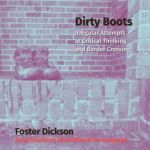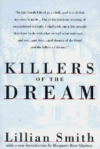Dirty Boots: The Books in Our Classrooms
Because I live in the 21st century like everybody else, I also experience our modern culture and media outlets pushing us to pay attention to what is new. We spend a lot of time nowadays in a quasi-cultural vortex, spinning around among the cultural and economic forces that shape us and that we ourselves shape: producers produce what their data tells them consumers will consume, the media needs something to say so they jump on the task of getting the message out, and ordinary people work as hard as we can to bring home the money to buy the new things that are being marketed and talked about. In the realm of books and reading, this set of cultural forces points to embracing what is recently created, published, or released: popular novels, YA about marginalized people, biographies of entertainers, political memoirs, whatever other cause célèbre.
 I would rather if we give more attention to books that are proven to be worthwhile and less attention to new trends. Let’s be honest, the folks who push this consumption-centered way of life are doing it because they need us to buy things, constantly. But what a world we’d have if we spent more time considering ideas that have stood the test of time! Or if we pondered our common humanity instead of our current differences or our own individuality! What if . . . we stepped out of that all-American cycle of prioritizing what is Now! and Me! in favor what is long-lasting and universal . . . Our perspectives would certainly change, probably for the better.
I would rather if we give more attention to books that are proven to be worthwhile and less attention to new trends. Let’s be honest, the folks who push this consumption-centered way of life are doing it because they need us to buy things, constantly. But what a world we’d have if we spent more time considering ideas that have stood the test of time! Or if we pondered our common humanity instead of our current differences or our own individuality! What if . . . we stepped out of that all-American cycle of prioritizing what is Now! and Me! in favor what is long-lasting and universal . . . Our perspectives would certainly change, probably for the better.
This comes into play in a significant way when we’re talking about the books we use in our schools. Ignoring for a moment the politicized squabbles of late, literature teaches us lessons, and when we see that those ideas from the past are relevant in the present, that recognition can help us to transcend our differences. However, there’s a perilous tightrope to be walked when considering my suggestion. TS Eliot put it this way in his essay “Tradition and the Individual Talent,” which was published in 1919:
Yet if the only form of tradition, of handing down, consisted in following the ways of the immediate generation before us in a blind or timid adherence to its successes, “tradition” should positively be discouraged. We have seen many such simple currents soon lost in the sand; and novelty is better than repetition. Tradition is a matter of much wider significance. It cannot be inherited, and if you want it you must obtain it by great labour.
In the American South, tradition is a concept of utmost important. Ours is a conservative culture that relies heavily on the past as a source of wisdom. That, in turn, has also resulted in our now-infamous levels of resistance to change. The problem with our conservatism – and with the modern concept of “traditional values” – lies in what Eliot calls “a blind or timid adherence to its successes,” which “should be discouraged.” If we ignore the failures of our traditions, we can’t repair them and do better.
Though he is sometimes decried as a neophobe and even a racist today, the late Harold Bloom had a good perspective on these issues. In “An Elegy for the Canon,” the introduction to his 1994 book The Western Canon, Bloom wrote against then-new calls for updating the “list” of “accepted” books that are taught in schools. (I use quotes here because there is no such list, nor much agreement about which books would be on one if there was.) Bloom believed that individual readers, not society at large, decide what is good and what is valuable, so he rejected calls for a socio-political solution to the dilemma. Ultimately, thought Bloom, what is truly worthwhile would appeal to many people, would survive the test of time, would stand up to criticism, and would thus remain well-known beyond its own era. He wrote, “All that we can do now is maintain some continuity with the aesthetic and not yield to the lie that what we oppose is adventure and new interpretations.” I am no more opposed to newness, progress, or innovation than Eliot and Bloom were. What all three of us oppose is calling something “good” simply because lots of people seem to like it right away. What would be better than arguing at public meetings over library holdings and classroom readings: deciding for ourselves, taking our time to form an opinion based on deeper thinking, and celebrating what is perpetuated naturally by readers.
This has been on my mind since The National Council of Teachers of English published their report The State of Literature Use in Secondary English Classrooms back in July. (For those who aren’t NCTE members, a summary is offered in this blog post.) Looking over the results reminds me how appalling it is that students in Southern states read so little about the South. Including the best works from one’s own culture should be a foregone conclusion. Certainly, To Kill a Mockingbird makes the cut often. Looking farther out, we might see Up from Slavery, Beloved, As I Lay Dying, or The Watsons Go to Birmingham. But, considering the Common Core’s demands for such a large amount of nonfiction reading, those books – four of the five being fiction – are not enough.
So, here are six nonfiction books by writers from the South that, I believe, disallow that “a blind or timid adherence to [our] successes.” I hear these days that “we need to know our history.” Agreed. And I’ll add: Our culture, too. To understand the South requires more than a set of surface-level facts about slavery, the Civil War, and the Civil Rights movement, and for too many people, that’s all they’ve got in their intellectual toolbox. Dig a little deeper, friends.
Belonging by bell hooks
Published in 2009, this book’s subtitle is “A Culture of Place.” bell hooks, whose given name was Gloria Watkins, was an African American feminist writer, originally from rural Kentucky, whose ideas point to a better world that could be built upon understanding and compassion. Belonging was one of her later books, and it looks back on her relationship to her family and to her Kentucky roots. She discusses growing up in a place where she felt she didn’t completely belong, then when she left, she found that others didn’t fully accept her because of where she was from! Leaving the South for college then for various teaching jobs, bell hooks found anti-Southern prejudice and knew she had to come to terms with it as a Southerner.
Sex, Economy, Freedom & Community by Wendell Berry
Published in 1993, this book of eight essays is startlingly direct in offering Berry’s assessments of what we have let our culture become: materialistic in our values and unrealistic in our expectations. From the opening “Preface,” the Kentucky writer, poet, and farmer lays it out there that education has becoming something that people only care about for its economic potential and that unlimited “growth” is not possible with limited resources. His essays elaborate on and elucidate those views. This book came out right about the time that the internet was going mainstream, and Berry has a few things to say about its emergence, too.
The Long Haul by Myles Horton
Published in 1990, this autobiography tells the story of the Highlander Folk School’s founder. Horton was an educator and activist whose work had a heavy influence on the Civil Rights movement. In this book and in an earlier work titled Unearthing Seeds of Fire, he lays out the idea behind “folk schools” and shares his vision that education and organizing are best when they teach people to solve their own problems. His legacy is alive and well today, as Highlander is still operating in Tennessee.
Forty Acres and a Goat by Will D. Campbell
Published in 1986, this is a memoir by the infamous “bootleg preacher,” who by that time had also published two successful novels. Campbell became a figure in the Civil Rights movement in the mid-1950s when he served as a chaplain at the University of Mississippi and supported the movement despite pressure from white supremacists and segregationists. After that, as he put it, he worked as a “freelance civil rights activist.” What is perhaps best about this book is that its stories tell us, Certainly you know about that . . . but did you know about this?
The Omni-Americans by Albert Murray
Published in 1970, this book is one that I would call a cult classic. Murray was an Alabama native who attended Tuskegee Institute then became a well-known jazz and blues critic and essayist. The subject here is race, African Americans in particular, and Murray had a perspective that very few mainstream books offer. In a conversational style that presents a painstakingly nuanced argument, Murray picks apart common conceptions of black people and rails against the people who’ve created those images. His main target are what he calls the “social science types,” whose studies and reports have formed the basis of the idea that black people as a group are poor, degraded, and left behind. His perception, rooted in his upbringing in an all-black community north of Mobile, is that of a vibrant culture whose successes and beauty are too little recognized by a white culture that worked to create the negative circumstances that it decries.
Killers of the Dream by Lillian E. Smith
Published in 1949, this nonfiction work is not for the squeamish. To teach this book would take a special person and even to read it requires an uncommon degree of open-mindedness. Lillian Smith was a white writer and activist in the years before the Civil Rights movement, and this one followed her 1944 (fiction) novel Strange Fruit about an interracial love affair between a black man and a white woman in Georgia. That prior work earned her more than a little negative attention, but this one sealed the deal. One of her arguments in this book is that white women were among the main problems in the segregated Jim Crow South because they ceded so many of their roles to black women; these were white wives and mothers, Smith wrote, who had black women clean their houses, cook their family’s meals, raise their children, and even in some cases, satisfy their husbands. Smith’s rhetoric is strong, and her assessments cannot be taken lightly.
Other Recommendations:Confederates in the Attic by Tony Horwitz



